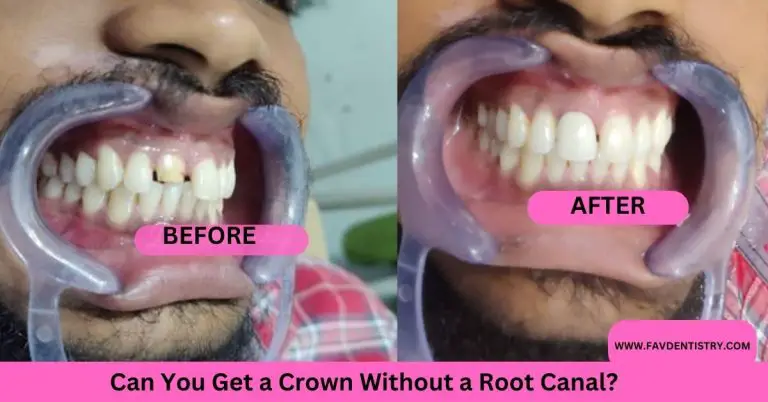Last Updated on 6 days by DR. ALBIN SIPES
A retreat root canal typically takes about one to two hours to complete. During this time, a dental professional will carefully remove infected pulp from the tooth’s root canal system and then seal it with a filling material to prevent further infection.
Root canals are often performed in multiple appointments, depending on the complexity of the case and the dentist’s recommendation. Root canal treatments are generally necessary when a tooth is severely decayed, infected, or damaged. This procedure aims to save the tooth from extraction while alleviating pain and restoring its function.
Typically, the retreatment process involves the removal of existing root canal fillings, thorough disinfection, shaping of the canals, and the placement of new filling materials. It is crucial to address the need for a retreat root canal promptly to prevent the spread of infection and potential complications.
Key Steps Involved In A Retreat Root Canal Procedure
A retreat root canal procedure involves several key steps to ensure successful treatment. Initially, a thorough examination and diagnosis are conducted to assess the condition of the tooth. This includes taking x-rays and scans to determine the extent of damage.
Local anesthesia is then administered to numb the area and ensure the patient’s comfort throughout the procedure. Following these initial steps, the dentist will carefully remove any existing filling material and thoroughly clean the root canals. This process involves the removal of infected or damaged tissue to promote healing.
Once the canals are clean, they are filled with a special material to seal and protect the tooth. The entire retreat root canal procedure can typically be completed within one or two appointments, depending on the complexity of the case.
Factors That Influence The Duration Of A Retreat Root Canal
Factors such as complexity of the case, number of root canals, presence of complications, and overall oral health condition can influence the duration of a retreat root canal. The complexity of the case determines how long the procedure will take.
If there are multiple root canals, the retreatment may require more time. The presence of complications, such as infection or calcified canals, may also prolong the treatment process. Additionally, the overall oral health condition of the patient plays a role in the duration of the retreat root canal.
It is important to note that every case is unique, and the exact length of time required for a retreat root canal may vary. The dentist will assess the specific situation and provide a more accurate estimate during the consultation.
Step 1: Accessing The Root Canal System
When it comes to retreat root canals, the duration can vary depending on various factors. During step 1, accessing the root canal system is crucial. In this process, the existing filling or crown is removed to create an access point.
This step allows the dentist to reach the root canal for further treatment. The duration of this step can differ based on the complexity of the case. Factors such as the location, condition of the tooth, and extent of infection play a role.
Generally, this step is completed in a single appointment. However, in more challenging cases, multiple visits may be required. It is essential to consult with a dental professional who can provide a personalized estimate for the retreat root canal procedure.
The duration can be influenced by individual circumstances.
Step 2: Cleaning And Disinfection Of The Root Canal
In the second step of a retreat root canal procedure, the focus is on cleaning and disinfecting the root canal. This involves the removal of infected or damaged pulp to eliminate any bacteria. Disinfectant solutions are used to ensure thorough cleaning.
Another important aspect is shaping the root canal, which helps in preventing future infection.
Step 3: Filling And Sealing The Root Canal
After the retreatment process is complete, the next step involves filling and sealing the root canal. The purpose of this step is to ensure that the canal space is completely sealed and protected. A biocompatible material is placed inside the root canal to fill the space and prevent any reinfection.
It is essential to choose the right type of filling material for this procedure. The material should be durable, long-lasting, and compatible with the surrounding tissues. Once the filling material is inserted, the root canal is sealed to provide an airtight barrier.
This sealing is crucial in preventing any bacteria or debris from entering the treated root canal and causing further complications. By properly filling and sealing the root canal, the retreatment process can be successfully completed, promoting the overall health of the tooth.
Step 4: Restoring The Tooth
Restoring the tooth after a retreat root canal is an essential step to ensure its longevity. Depending on the tooth’s structural integrity, a dental crown or filling may be necessary. These dental restoration procedures are designed to protect the treated tooth and restore its functionality.
By reinforcing the tooth’s strength, a dental crown or filling helps to prevent any further damage. This step not only improves the tooth’s appearance but also promotes long-term oral health. Therefore, it is important to consider the need for a dental crown or filling based on the individual tooth’s condition.
So, consult with your dentist to determine the most suitable dental restoration option for your retreat root canal treatment.
Typical Length Of A Retreat Root Canal Procedure
A retreat root canal procedure can vary in length depending on several factors. The complexity of the case, the number of canals in the tooth, and the presence of infection all contribute to the overall duration. Additionally, the skill and experience of the dentist performing the procedure play a role in its efficiency.
It is important to note that while speed is desirable, thoroughness and precision should never be compromised in a retreat root canal. The dentist must ensure that all infected tissue is properly removed, and the canals are thoroughly cleaned and sealed to prevent future complications.
By taking the necessary time to perform a meticulous retreat root canal, the dentist can ensure the best outcomes for the patient’s oral health.
Recovery After A Retreat Root Canal Procedure
Recovery after a retreat root canal procedure may involve some temporary discomfort, which can be managed. It is important to follow the dentist’s post-procedure care instructions. These may include avoiding hot or cold foods and drinks, taking pain medication as prescribed, and maintaining good oral hygiene.
It is common to have follow-up appointments to ensure proper healing and assess the long-term prognosis of the tooth. The dentist will discuss the expected outcomes and provide any necessary further treatment options. It is important to communicate any ongoing pain or concerns to the dentist for appropriate care.
By following the dentist’s instructions and attending follow-up appointments, patients can ensure the best chance of a successful retreat root canal and a successful recovery.
Frequently Asked Questions On How Long Does A Retreat Root Canal Take
How Long Does A Retreat Root Canal Take?
A retreat root canal typically takes between one to two hours to complete. The exact length of time can vary depending on the complexity of the case and the location of the tooth. Your endodontist will be able to provide a more accurate estimate during your consultation.
What Is Involved In A Retreat Root Canal Procedure?
During a retreat root canal procedure, the endodontist will remove the previous root canal filling material, clean the inside of the tooth, and then fill and seal the canals. This may involve the use of a dental microscope for enhanced precision.
The goal is to eliminate any infection and save the tooth from further damage.
Will A Retreat Root Canal Be Painful?
Most patients report little to no discomfort during a retreat root canal procedure. Local anesthesia will be administered to ensure you are comfortable throughout the treatment. After the procedure, you may experience some mild soreness or sensitivity, but this can usually be managed with over-the-counter pain medication.
Conclusion
The duration of a retreat root canal procedure depends on various factors, such as the complexity of the case, the skill and experience of the dentist, and the condition of the tooth. On average, a retreat root canal treatment can take anywhere from one to three appointments, each lasting about one to two hours.
It is important to remember that the goal of a retreat root canal is to save your natural tooth and prevent the need for extraction. The process involves removing the previous canal filling, thoroughly cleaning the tooth’s root canals, and placing a new filling material.
During the retreatment, your dentist will also assess the tooth’s overall health and ensure that any infection or inflammation is properly addressed. By choosing an experienced dentist and promptly addressing any retreat root canal issues, you can minimize the time required for treatment and increase the likelihood of a successful outcome.




